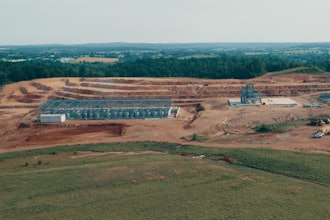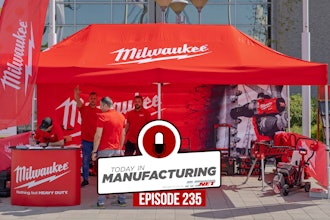Technological innovation has led to numerous changes in society, but no one could have predicted the nearly complete transformation that manufacturing practices have undergone over the past few years due to technology. Technology almost always leads to increases in productivity and efficiency when computer-controlled processes, machines and equipment are concerned. However, it is the changes to business processes that require employees to demonstrate the greatest levels of flexibility and agility. Organizations that embrace change often find employees who are willing to learn, adapt and indeed thrive, as they work to find new and different uses for technology investments.
Cloud deployments, 3D printing and real-time collaboration are just a handful of ways forward-thinking manufacturers are staying ahead of the game. However, this “new age of manufacturing” also brings added complexity. Fortunately, next generation ERP solutions are being designed to take advantage of these new technologies with industry-specific technical capabilities, and are proving to be helpful in making the complex simple.
To make the most of new strategies, such as collaboration through social media, business intelligence and deep analytics, manufacturers now need a level of flexibility and agility that old, outdated ERP solutions or homegrown applications cannot provide. Previous-generation ERP systems were monolithic in nature, and weren’t able to easily accommodate change. If a system wasn’t purpose-built for a specific industry, it was most likely heavily modified in an effort to meet specific customer requirements — making the system hard to upgrade. That is why looking for a modern solution is very important to the vitality of an organization, and selecting one that can keep pace with future market changes out of the box will offer a better return on investment.
Getting down to business
For many, the idea of selecting, implementing and deploying an ERP system is daunting as the risks often seem to outweigh the benefits. Do we have the right partner? Do we have the right team? Do we have the right infrastructure? Is the organization committed? Do we have the right selection criteria? When starting the implementation process, it is important to remain focused on your business objectives while keeping a few principles in mind.
Here are ten tips to ensure that your organization has a successful ERP implementation:
Scope is key. Begin by carefully defining the scope of your project. Focus on specific business processes and system requirements. The more specific you can be upfront, the more detailed your vendors can be in their proposals.
Align teams early on. Make sure a clear and concise charter for the project is documented and supported by the full internal team, including C-level officers. Align with corporate decision-makers early and involve a cross-section of teams in the evaluation committee.
Get specialized treatment. Select an ERP solution that fits the specific needs of your vertical industry. Choosing a solution which already contains functionality to address industry-specific processes, terms and regulation compliance will eliminate the need for costly modifications.
Think long-term. Choose a flexible ERP so that you can accommodate unforeseen future needs and changing business requirements.
Think out-of-the-box. Avoid customizations at all costs. They cause your ERP to be difficult to upgrade, causing continual need to update those modifications.
Be efficient. Adopt the best practices and workflows of the ERP, rather than trying to change the ERP to accommodate your organization’s current workflows. Your organization will get maximum efficiency by adopting the ERP’s integral strategy for operational flow. If you try to mold the new ERP to your old processes, you will lose the efficiencies built in to the solution.
User experience reigns supreme. When choosing an ERP, be sure to consider the ease of use and the overall user experience. A solution that is highly intuitive speeds the implementation process, reducing the amount of training required.
Training is paramount. As you make your ERP selection and plan the implementation phase, allow for adequate training of personnel. Make sure users are brought up to speed on the new functionality and benefits to them. This encourages them to be fully engaged in the transition, embracing rather than resisting change.
Set realistic expectations. Do not try to rush through or skip necessary steps of a phased implementation in order to speed outcomes.
Communicate, collaborate and document. Be sure to keep track of decisions concerning your project’s scope, expectations and concrete deliverables. Collaborate with your ERP vendor on successful implementation strategies, taking advantage of lessons learned from previous successful implementations. Although no two ERP projects are exactly the same, you can often leverage tactics that have been proven to work.
Highly flexible ERP systems allow companies to be proactive rather than reactive to customer demands and market changes. These solutions can prepare and plan strategic actions, beating competitors to opportunities, preventing issues from escalating and communicating in a much more timely fashion. With solutions that allow you to quickly and easily adapt processes, expand offerings and change workflows — without costly modifications — organizations can pursue growth opportunities with confidence. Whether it’s developing a product for a highly-demanding market, adding high-value services, or specializing in made-to-order quality products, a flexible ERP solution allows organizations to focus on the details that matter most to customers. As you seek new revenue sources and ways to attract new customers, you will appreciate the ability to focus on the important competitive advantages — speed, quality, innovation and service.
Larry Korak is Industry & Solution Strategy Director for Infor.



















